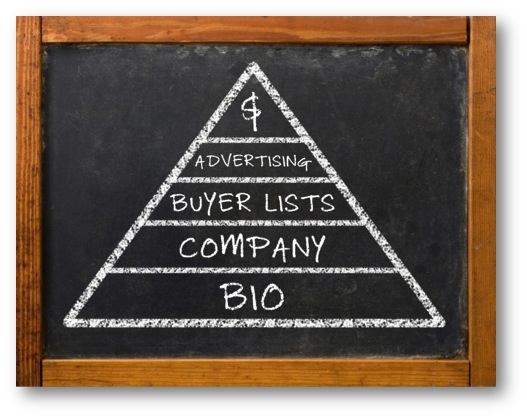The Clarity Series (CS) is a series of posts all on one subject. This particular subject is prospecting. While the context is commercial real estate, these steps and principles can be applied to any sales. To read the introduction of this series, click here. To read an overview of the entire prospecting system, click here. Thank you for reading!
I was an Arabic Linguist in the Marine Corps. Those with my job specialty went one of two paths. They deployed in support of infantry units, or they were sent to a support battalion state-side. Those units did not deploy. I was placed on the second path.
My mom was thrilled as was my wife. I was not. I would volunteer for every deployment (they never sent me). I wanted to go and do the job.
I compare this to faithfully studying for a test. You have put in the work. You are ready. You know that you will come through when it matters at test-time. You are confident that you will ace it. But you never get to take the test. That is what it was like for me. I had put in the work and needed to take the test.
You have now landed a meeting to make a listing presentation (or whatever presentation applies to you). You have worked through the entire prospecting process to get to this point. Your put in the work becoming a market specialist. Building a database. Sending letters. Making cold calls. Conducting the needs analysis. It has all led to this moment. You sit in front of the prospect. The business is there for the taking. You have the privilege of potentially improving the life of the person in front of you.
What do you do?
Normal Listing Presentation
Before we get into what the winning listing presentation looks like, let discuss the industry standard.
The industry standard listing presentation is broker-centric and follows the sequence in the picture.
- Bio – the broker talks about how awesome he is. The prospect gets to hear the bio, breadth of experience, etc.
- Company – the broker then talks about the company. They have been serving their clients faithfully for 45 years, etc.
- Buyer Lists – My database is bigger than anyone else’s. This is the claim that kills me. There is no way that any one firm knows all the potential buyers for the property. It is simply impossible. But this is the claim.
- Advertising – Explanation is given to how the property will be marketed. They promise to pre-screen all buyers to not waste the prospects time, etc.
- The property – Finally, the broker gets around to discussing something that effects the prospect – their property! The broker takes the seller through the underwriting and analysis.
- Listing Agreement & Commission – Once the broker has made the case for how awesome she and the company are, and explained how they will produce the sure-fire buyer, they make the case for their fee and negotiate the listing agreement.
Note that the prospect must sit through a presentation that has little to do with them and everything to do about the broker and his/her company. Often, the prospect has 4 of these back to back in an afternoon. The last broker in should bring a six pack.
Winning Presentation
In contrast to the broker-centric presentation, the winning presentation is all about the prospect.
- Start by connecting – You have already had the needs-analysis interview so you know what the main concerns and highest interests of the prospect are. Start there. Demonstrate that you were listening. Assure the prospect you have custom crafted your presentation to meet those needs. Discuss with the prospect your conclusions about the property and demonstrate how you got there.
- Explain your action-plan – As your prospect has specific needs, explain how you are going to meet those needs. Think of all your capabilities as the proverbial toolbox. Which tools are you going to pull out and use together to accomplish the goals of your prospect.
- I have, I am, and I will do – Now share with your prospect a deal story where you have accomplished a similar feat before. Use the “I have, I am, and I will do” method. I have accomplished this before. I am working to accomplish this right now with other clients. I will be able to do so again for you.
- Close – Summarize the key points of your presentation. Emphasize your understanding of the prospect’s situation. Show how you custom solution will accomplish the prospect’s goals. Then ask for the business! Don’t forget to actually ask. Too many salespeople stop just before this point.




Please note: I reserve the right to delete comments that are offensive or off-topic.